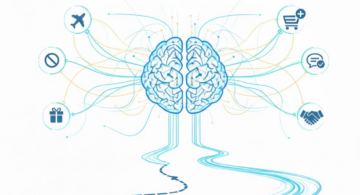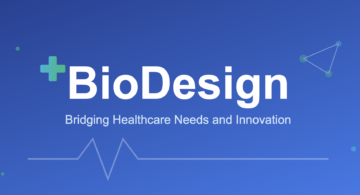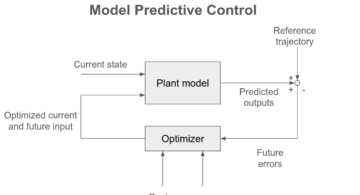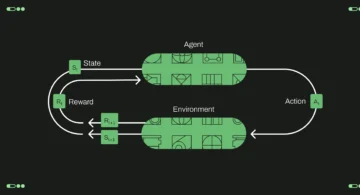Eyes, JAPAN
2024/11/14
The Future of Mankind with Big Data and IoT: Transforming Society for the Better
Hemanth
The integration of Big Data and the Internet of Things (IoT) is shaping up to be one of the most transformative movements of the 21st century. These technologies are not just about smarter gadgets or faster processing; they are laying the groundwork for innovations that promise to reshape industries, improve societal welfare, and redefine how people live and interact.
The Big Data and IoT Revolution
At its core, Big Data involves collecting, processing, and analyzing vast volumes of data to find patterns, make predictions, and drive informed decisions. IoT, on the other hand, is the network of physical objects—“things”—embedded with sensors, software, and other technologies that connect and exchange data with other devices and systems over the internet. When Big Data and IoT work in tandem, they produce a powerful combination: the sensors in IoT devices collect massive amounts of data, which Big Data algorithms can analyze to produce insights that were once unimaginable.
Major Societal Changes Driven by Big Data and IoT
Smart Cities for Sustainable Living
Imagine a city where traffic flows seamlessly, energy is distributed based on demand, and waste management is automated and efficient. This is the vision of smart cities, powered by IoT sensors and Big Data analytics. By 2050, it’s estimated that more than two-thirds of the global population will live in urban areas, which will increase the pressure on infrastructure, utilities, and services.
Smart cities, using IoT sensors and Big Data analysis, can monitor everything from air quality and noise pollution to public transportation and water usage in real time. This data can then guide city officials to make adjustments in resource distribution, manage traffic patterns, and reduce pollution, leading to a healthier, more sustainable urban environment.
Revolutionizing Healthcare and Personalized Medicine
Healthcare is one of the most promising areas for IoT and Big Data application. IoT devices, such as wearable health monitors, can track a patient’s heart rate, blood pressure, and glucose levels continuously. When combined with Big Data analytics, healthcare providers can gain insights into disease trends, predict outbreaks, and develop personalized treatments.
Big Data also enables predictive healthcare, which is the ability to detect potential health issues before they become serious. For example, if a wearable device detects irregular heart patterns, it could alert the user and their physician, enabling early intervention. This will lead to not only increased life expectancy but also better quality of life for individuals, ultimately reducing the strain on healthcare systems.
Enhanced Safety and Security
IoT and Big Data have the potential to revolutionize public safety. From smart surveillance systems that can detect unusual activity in real time to connected home security systems that alert homeowners of intrusions, these technologies can make societies safer. Predictive policing, for instance, uses Big Data to analyze past crime data and predict areas where crimes are more likely to occur, allowing law enforcement to allocate resources more effectively.
On a personal level, IoT-enabled wearables with location tracking could help ensure the safety of children, elderly individuals, and pets. Combined with Big Data, these technologies can help identify patterns in emergencies, enabling faster response times.
Economic Growth and Job Transformation
As IoT and Big Data become more embedded in industries, they will create new job opportunities. Fields such as data science, IoT engineering, and cybersecurity are already experiencing high demand. However, this technological advancement will also lead to the automation of certain job roles. Repetitive or dangerous tasks may be handled by connected machines, allowing humans to focus on higher-value work that requires creativity, problem-solving, and emotional intelligence.
The potential economic impact is immense, with businesses benefiting from better efficiency, reduced costs, and the ability to innovate at a faster pace. Industries ranging from manufacturing to agriculture will transform, driving economic growth and opening up entirely new markets.
Education and the Learning Environment
In the future, Big Data and IoT will make education more personalized. IoT-enabled classrooms, equipped with smart boards, tablets, and wearable devices, will allow teachers to monitor each student’s progress in real time. Big Data analytics can assess learning patterns and identify areas where students may struggle, allowing educators to tailor their teaching methods accordingly.
Moreover, online learning platforms can leverage Big Data to adapt content for each user based on their strengths and weaknesses, making education more accessible and effective. In regions with limited access to traditional educational resources, IoT and Big Data can bridge the gap, providing opportunities for remote learning and skills development.
Welfare and Ethical Implications
The advantages of Big Data and IoT come with ethical considerations and potential challenges. Privacy and data security are paramount, as IoT devices generate a tremendous amount of personal data. To protect individuals’ privacy, governments and corporations must work together to establish strong data security practices and regulatory frameworks.
Moreover, the automated nature of these technologies raises questions about job displacement and socioeconomic disparities. While some jobs may become obsolete, there will be new roles and industries that emerge. Investing in education and upskilling will be essential to ensuring that society as a whole can benefit from this technological revolution.
Conclusion
The convergence of Big Data and IoT represents a powerful force for societal transformation. From smart cities and personalized healthcare to enhanced security and educational reform, the potential to improve the welfare of people worldwide is profound. However, it is essential to approach this future responsibly, addressing ethical concerns and ensuring that the benefits are distributed equitably.
In the years ahead, Big Data and IoT will enable us to solve problems that were once insurmountable. By harnessing the data-driven insights they provide, humanity can look forward to a future that is not only more efficient and productive but also healthier, safer, and more sustainable.
The Big Data and IoT Revolution
At its core, Big Data involves collecting, processing, and analyzing vast volumes of data to find patterns, make predictions, and drive informed decisions. IoT, on the other hand, is the network of physical objects—“things”—embedded with sensors, software, and other technologies that connect and exchange data with other devices and systems over the internet. When Big Data and IoT work in tandem, they produce a powerful combination: the sensors in IoT devices collect massive amounts of data, which Big Data algorithms can analyze to produce insights that were once unimaginable.
Major Societal Changes Driven by Big Data and IoT
Smart Cities for Sustainable Living
Imagine a city where traffic flows seamlessly, energy is distributed based on demand, and waste management is automated and efficient. This is the vision of smart cities, powered by IoT sensors and Big Data analytics. By 2050, it’s estimated that more than two-thirds of the global population will live in urban areas, which will increase the pressure on infrastructure, utilities, and services.
Smart cities, using IoT sensors and Big Data analysis, can monitor everything from air quality and noise pollution to public transportation and water usage in real time. This data can then guide city officials to make adjustments in resource distribution, manage traffic patterns, and reduce pollution, leading to a healthier, more sustainable urban environment.
Revolutionizing Healthcare and Personalized Medicine
Healthcare is one of the most promising areas for IoT and Big Data application. IoT devices, such as wearable health monitors, can track a patient’s heart rate, blood pressure, and glucose levels continuously. When combined with Big Data analytics, healthcare providers can gain insights into disease trends, predict outbreaks, and develop personalized treatments.
Big Data also enables predictive healthcare, which is the ability to detect potential health issues before they become serious. For example, if a wearable device detects irregular heart patterns, it could alert the user and their physician, enabling early intervention. This will lead to not only increased life expectancy but also better quality of life for individuals, ultimately reducing the strain on healthcare systems.
Enhanced Safety and Security
IoT and Big Data have the potential to revolutionize public safety. From smart surveillance systems that can detect unusual activity in real time to connected home security systems that alert homeowners of intrusions, these technologies can make societies safer. Predictive policing, for instance, uses Big Data to analyze past crime data and predict areas where crimes are more likely to occur, allowing law enforcement to allocate resources more effectively.
On a personal level, IoT-enabled wearables with location tracking could help ensure the safety of children, elderly individuals, and pets. Combined with Big Data, these technologies can help identify patterns in emergencies, enabling faster response times.
Economic Growth and Job Transformation
As IoT and Big Data become more embedded in industries, they will create new job opportunities. Fields such as data science, IoT engineering, and cybersecurity are already experiencing high demand. However, this technological advancement will also lead to the automation of certain job roles. Repetitive or dangerous tasks may be handled by connected machines, allowing humans to focus on higher-value work that requires creativity, problem-solving, and emotional intelligence.
The potential economic impact is immense, with businesses benefiting from better efficiency, reduced costs, and the ability to innovate at a faster pace. Industries ranging from manufacturing to agriculture will transform, driving economic growth and opening up entirely new markets.
Education and the Learning Environment
In the future, Big Data and IoT will make education more personalized. IoT-enabled classrooms, equipped with smart boards, tablets, and wearable devices, will allow teachers to monitor each student’s progress in real time. Big Data analytics can assess learning patterns and identify areas where students may struggle, allowing educators to tailor their teaching methods accordingly.
Moreover, online learning platforms can leverage Big Data to adapt content for each user based on their strengths and weaknesses, making education more accessible and effective. In regions with limited access to traditional educational resources, IoT and Big Data can bridge the gap, providing opportunities for remote learning and skills development.
Welfare and Ethical Implications
The advantages of Big Data and IoT come with ethical considerations and potential challenges. Privacy and data security are paramount, as IoT devices generate a tremendous amount of personal data. To protect individuals’ privacy, governments and corporations must work together to establish strong data security practices and regulatory frameworks.
Moreover, the automated nature of these technologies raises questions about job displacement and socioeconomic disparities. While some jobs may become obsolete, there will be new roles and industries that emerge. Investing in education and upskilling will be essential to ensuring that society as a whole can benefit from this technological revolution.
Conclusion
The convergence of Big Data and IoT represents a powerful force for societal transformation. From smart cities and personalized healthcare to enhanced security and educational reform, the potential to improve the welfare of people worldwide is profound. However, it is essential to approach this future responsibly, addressing ethical concerns and ensuring that the benefits are distributed equitably.
In the years ahead, Big Data and IoT will enable us to solve problems that were once insurmountable. By harnessing the data-driven insights they provide, humanity can look forward to a future that is not only more efficient and productive but also healthier, safer, and more sustainable.
 2025/12/12
2025/12/12 2025/12/07
2025/12/07 2025/11/06
2025/11/06 2025/10/31
2025/10/31 2025/10/24
2025/10/24 2025/10/03
2025/10/03 2025/08/30
2025/08/30 2025/08/22
2025/08/22